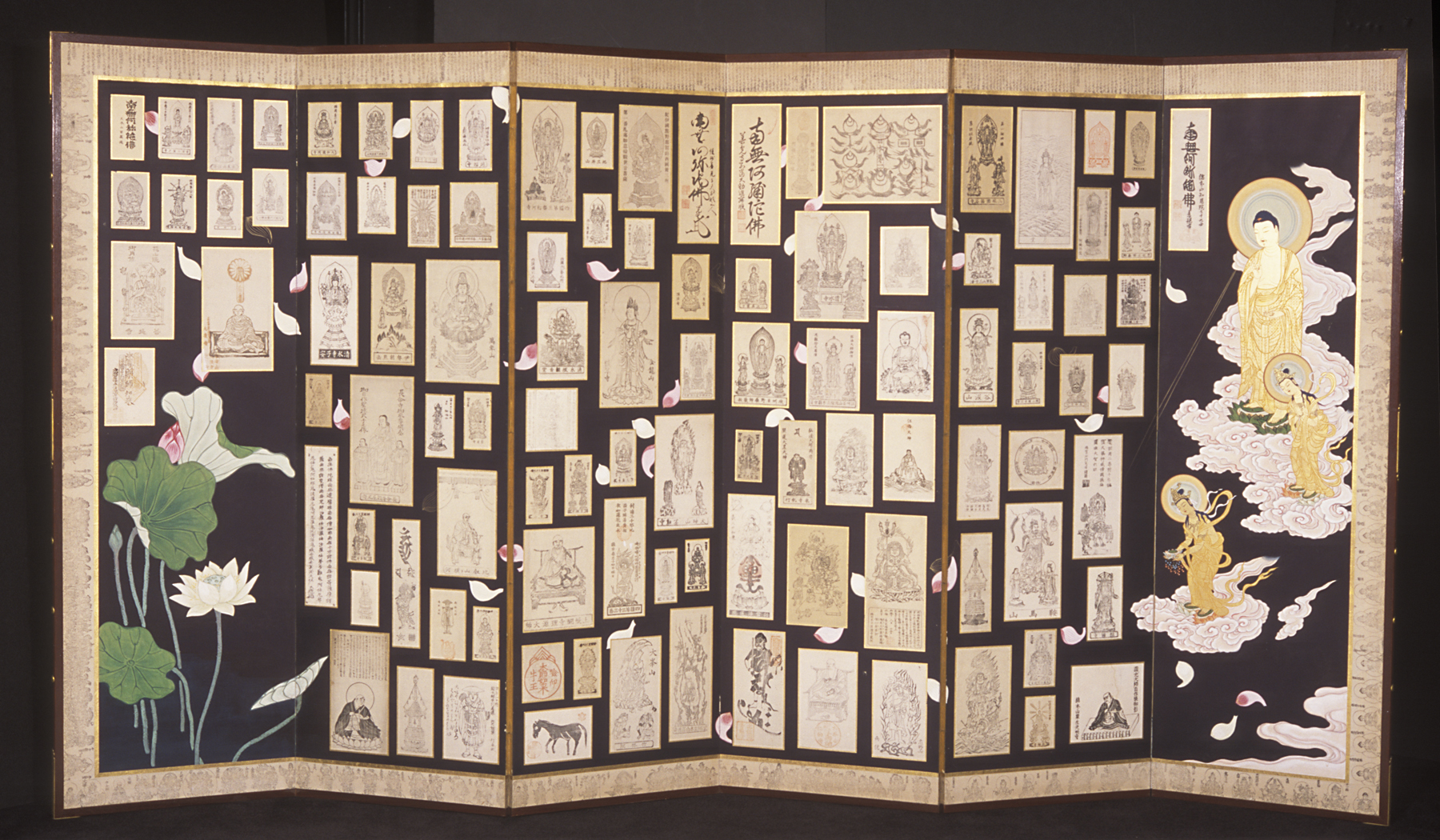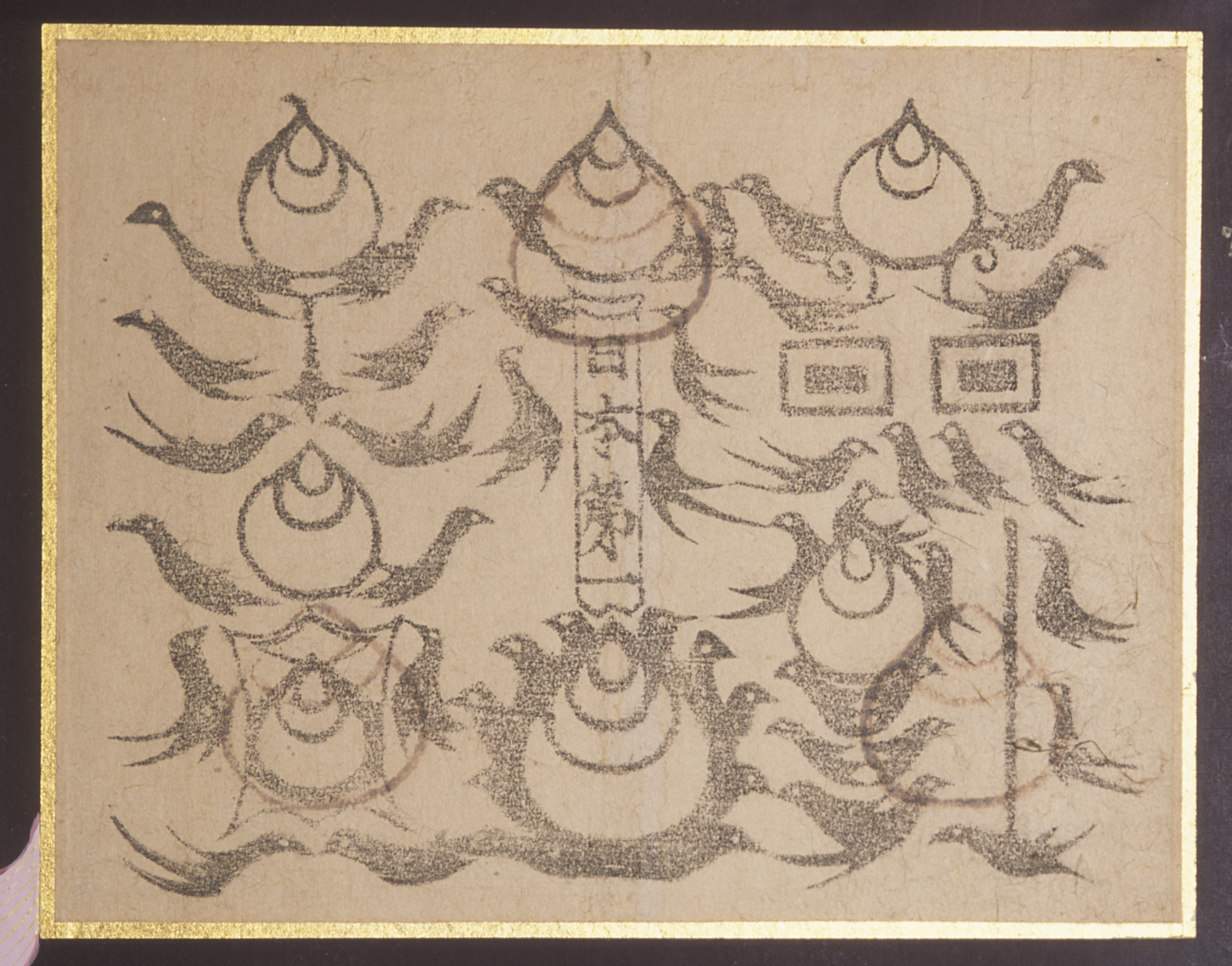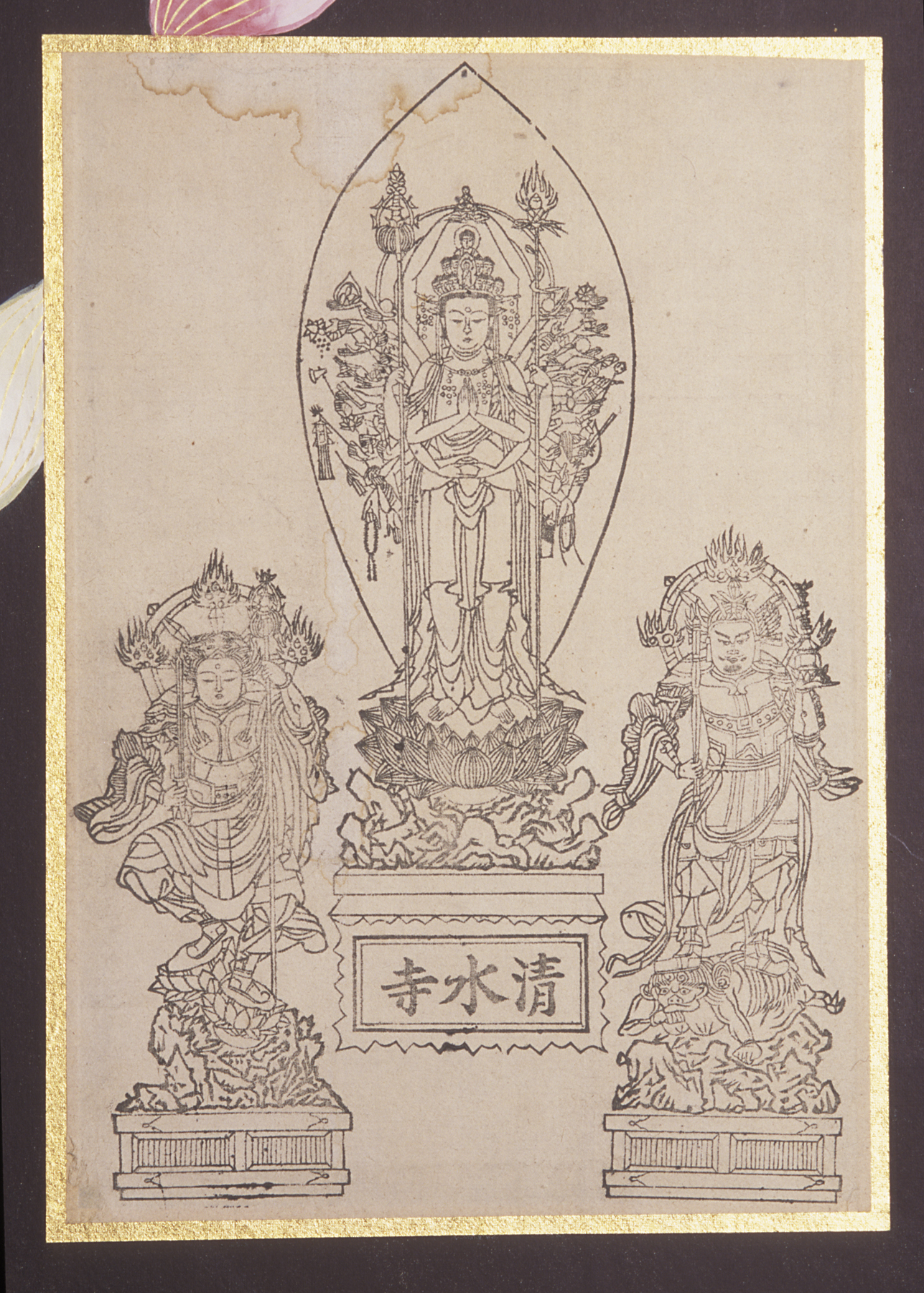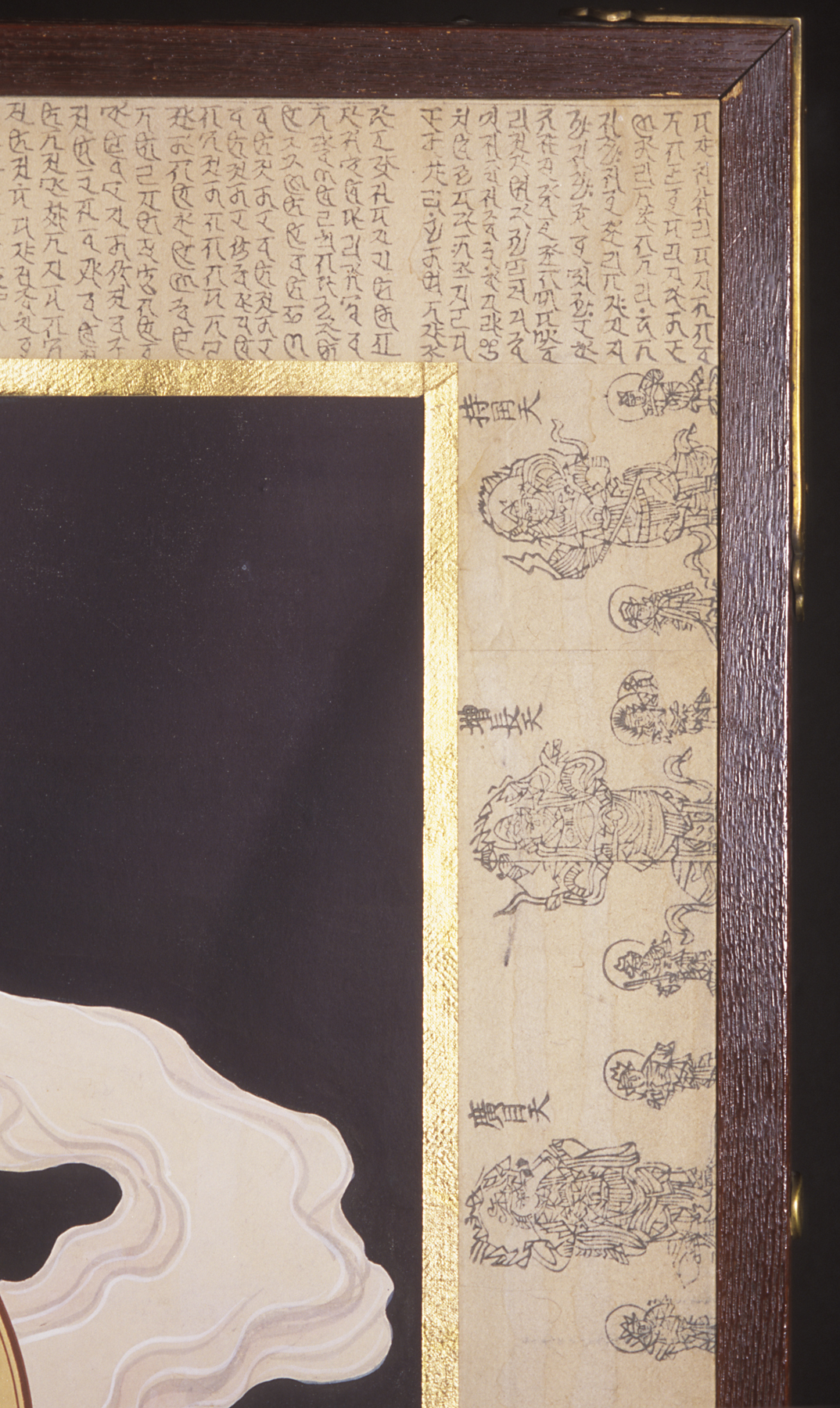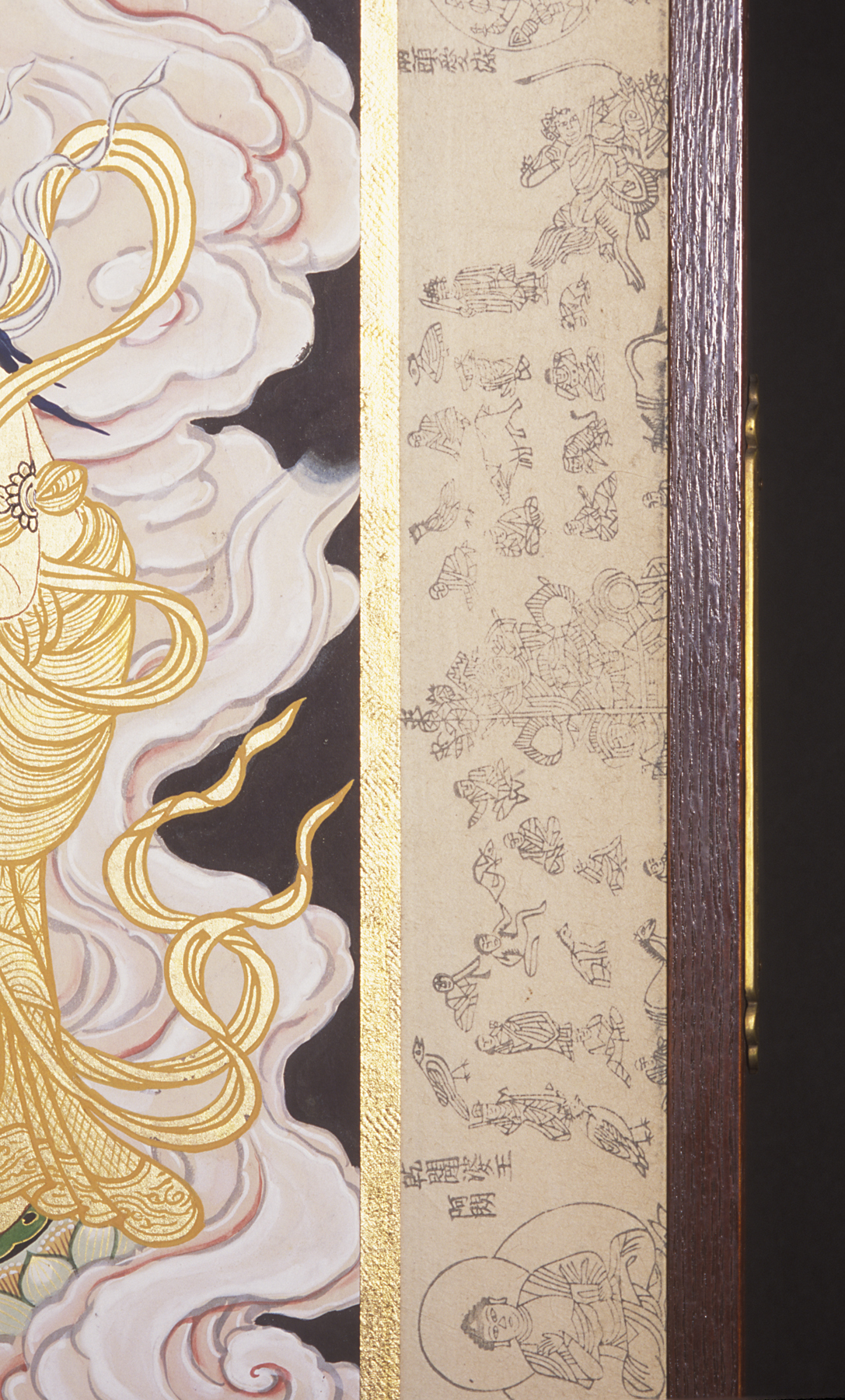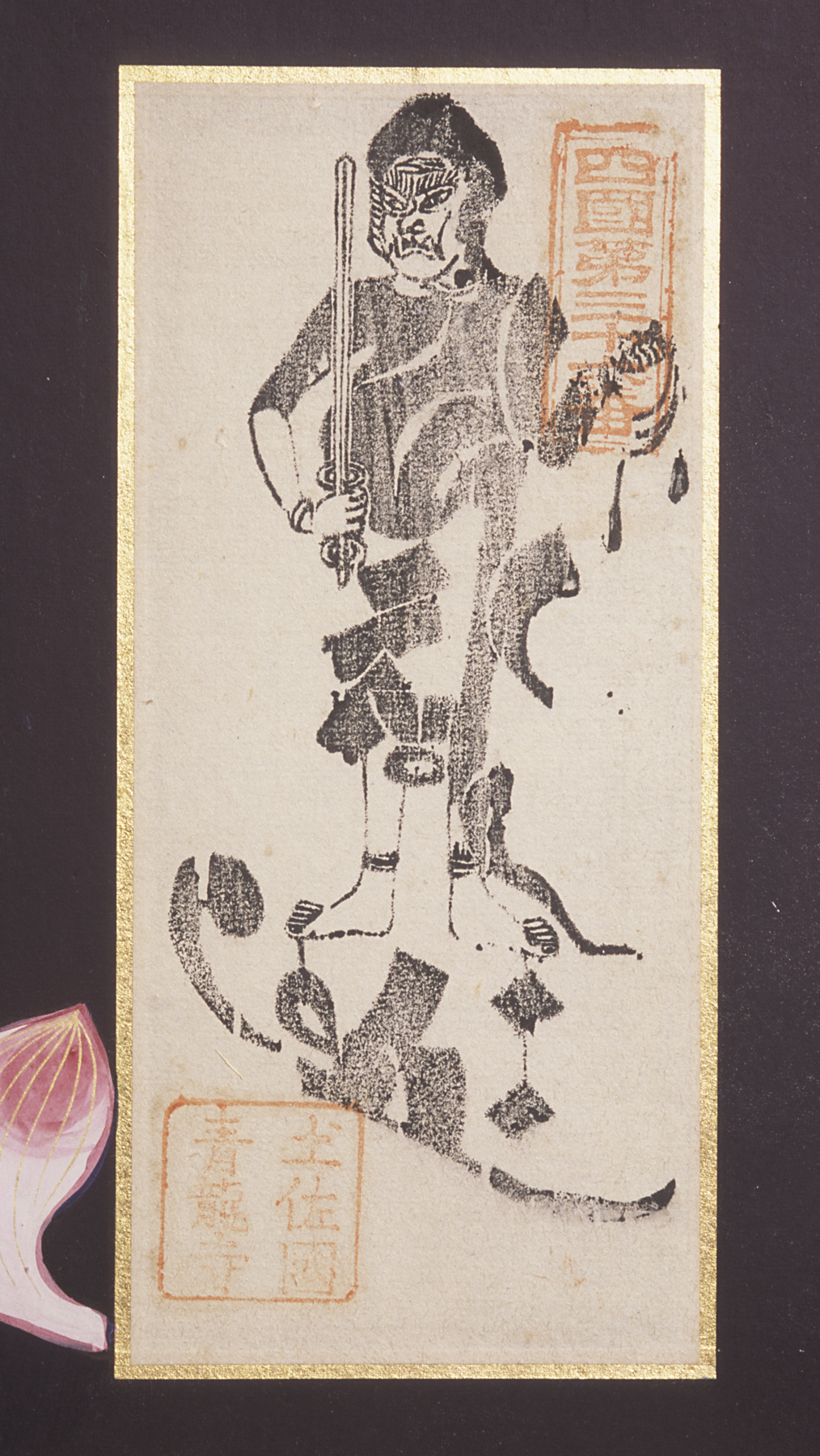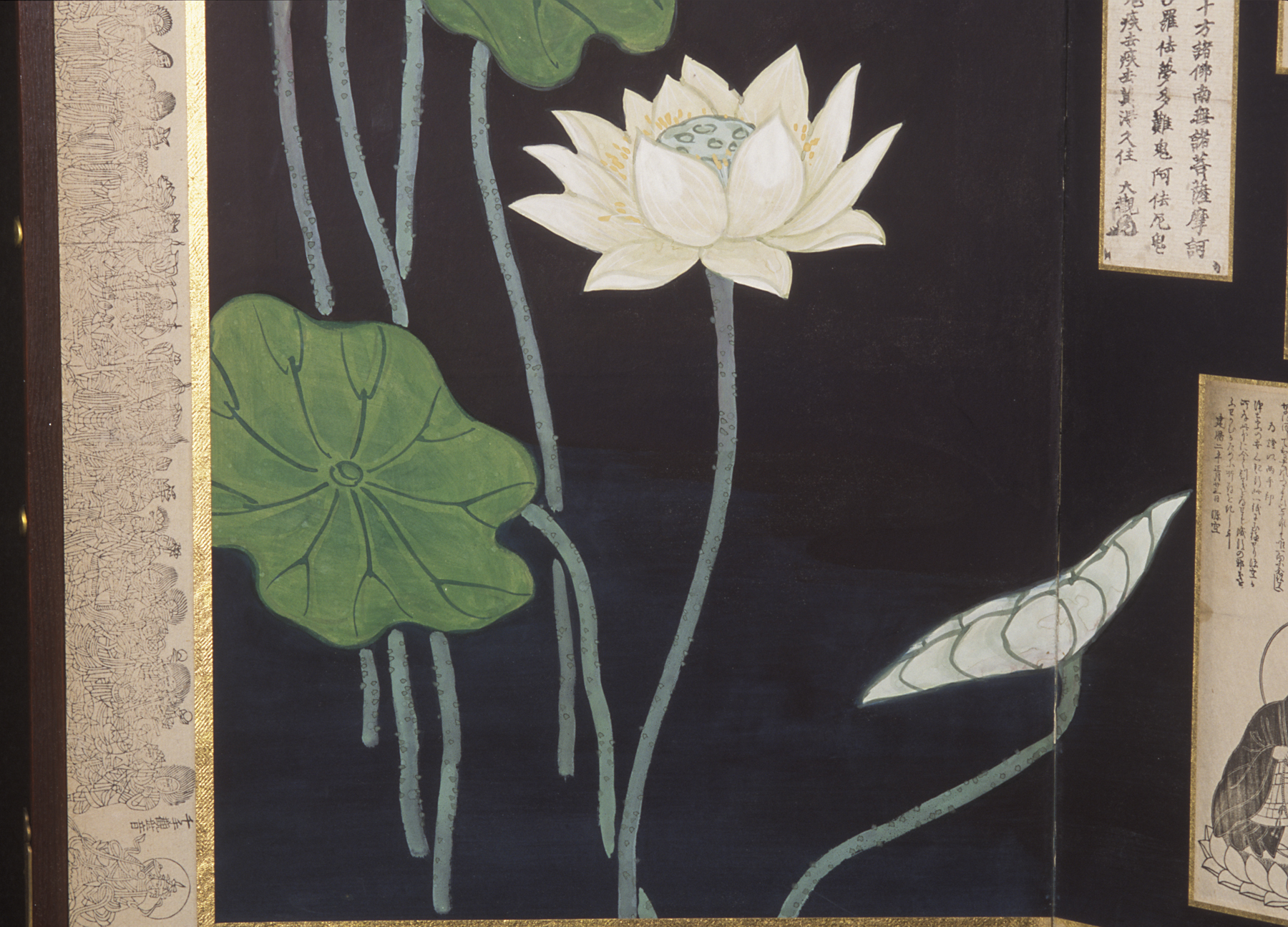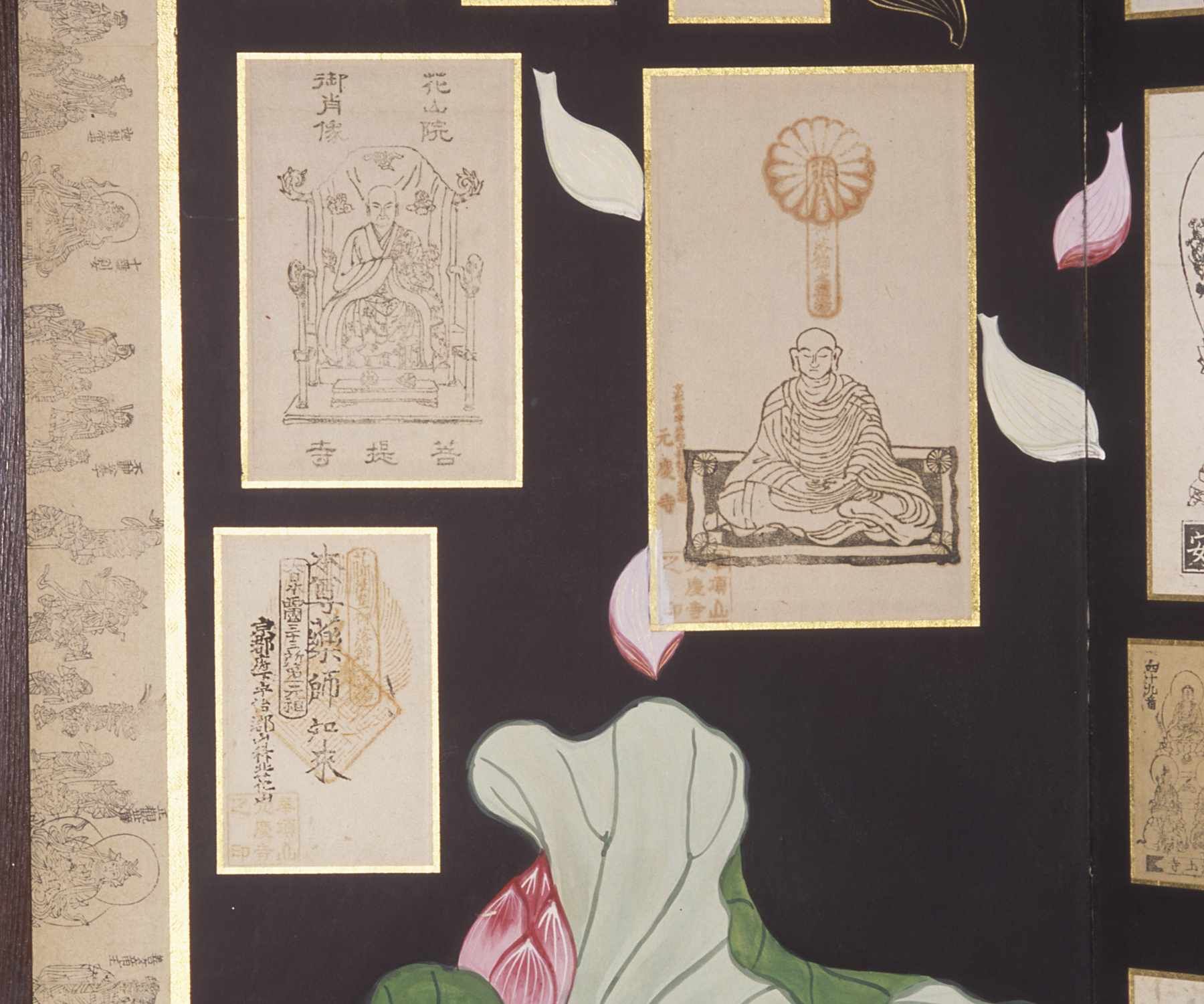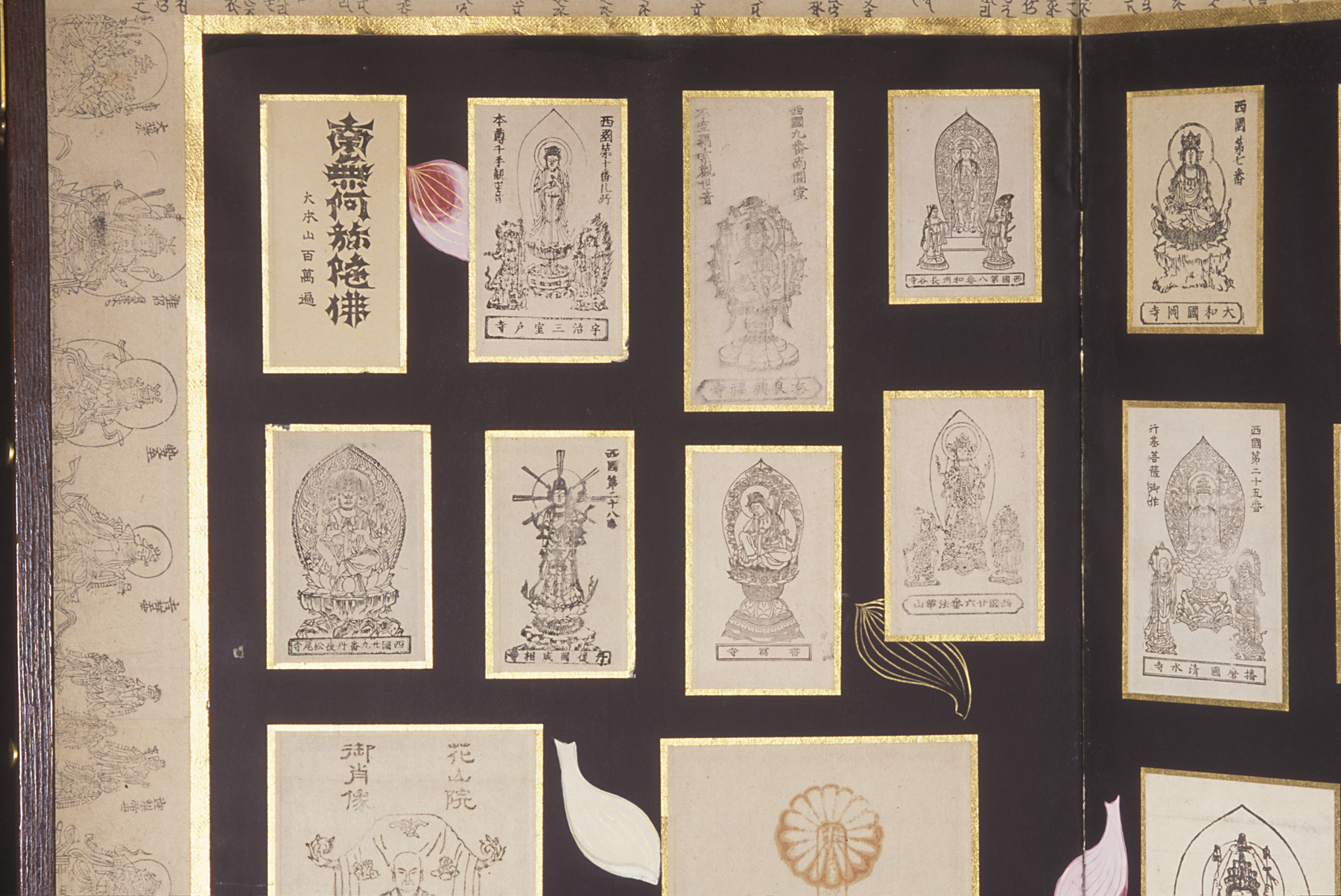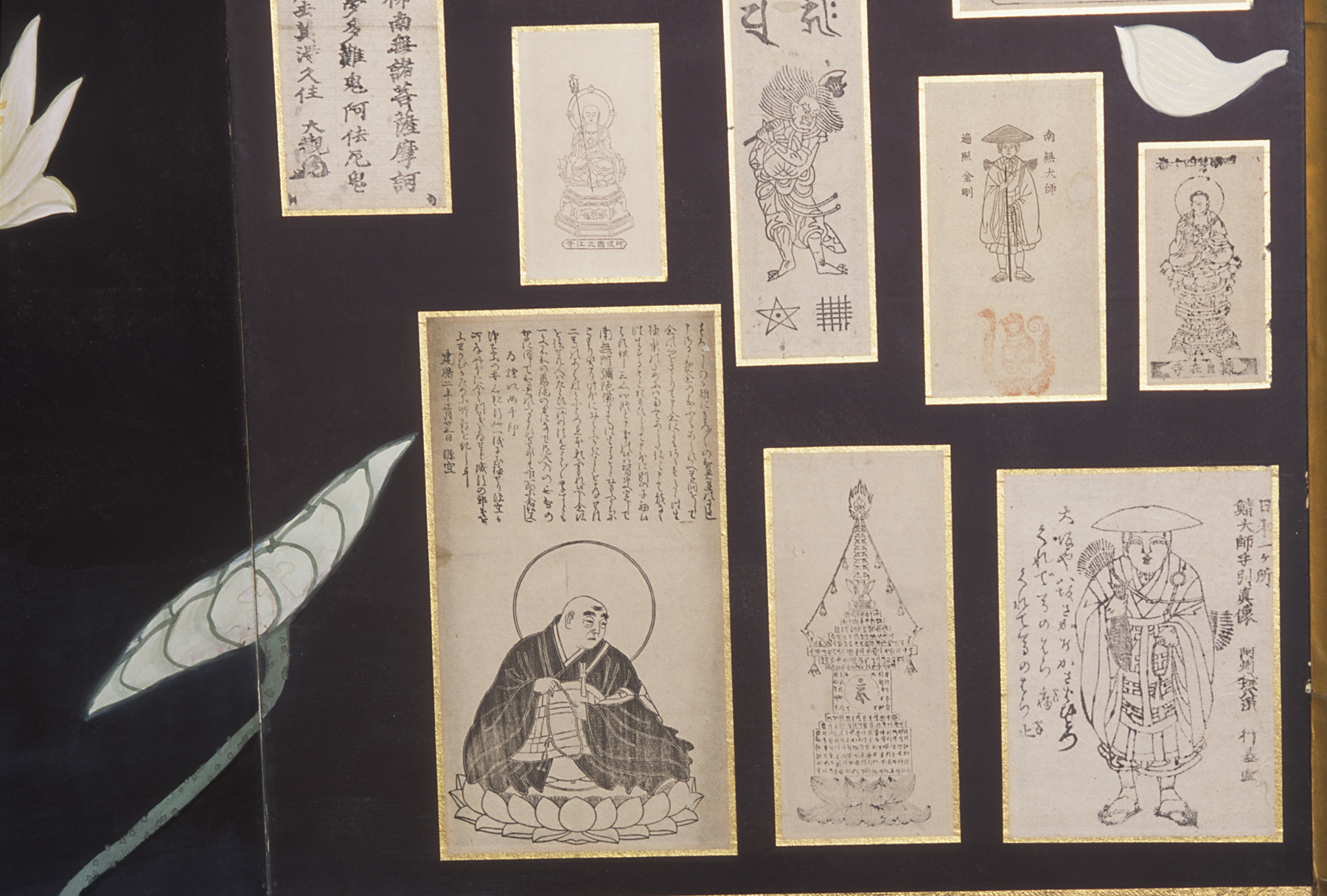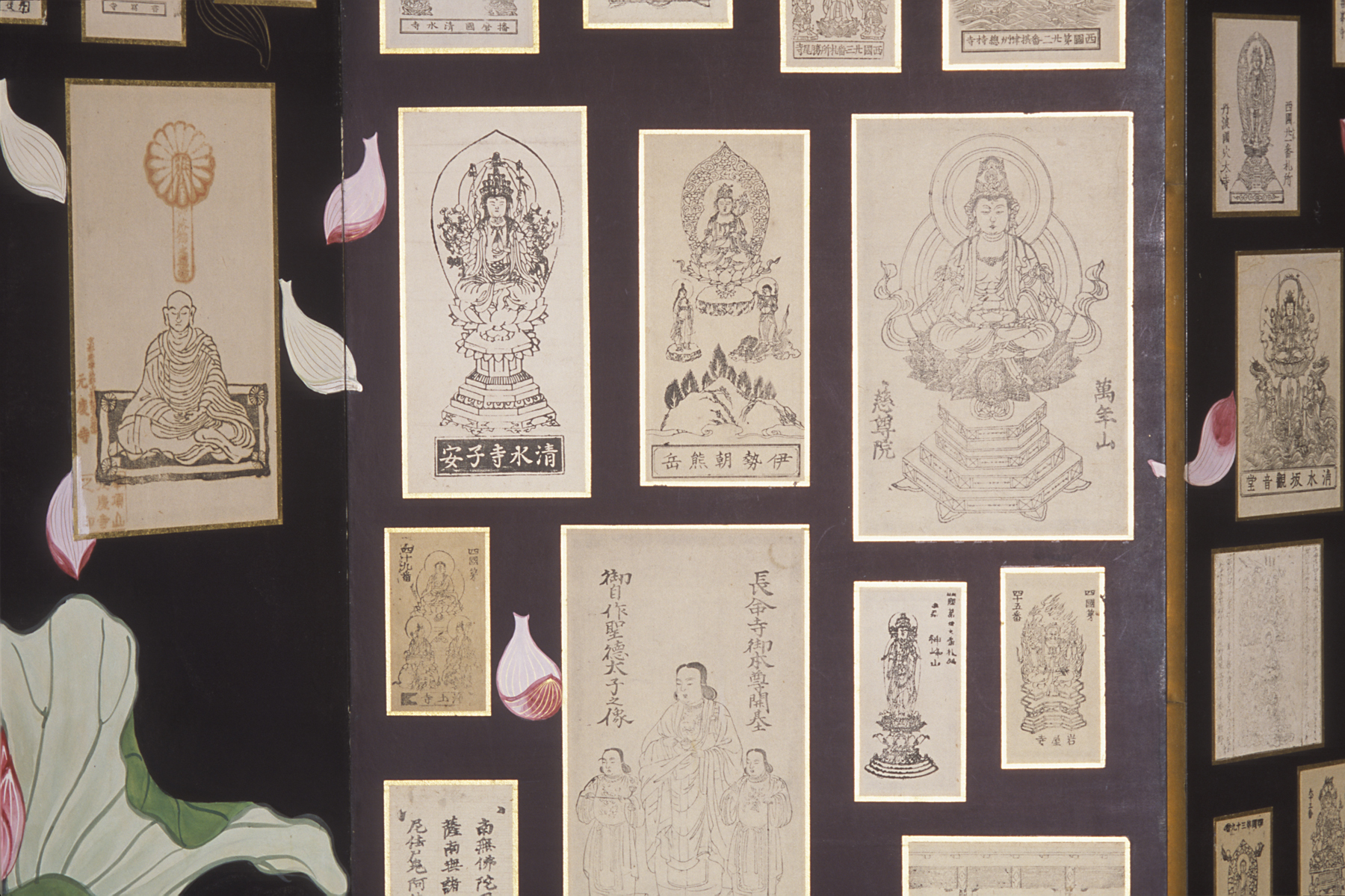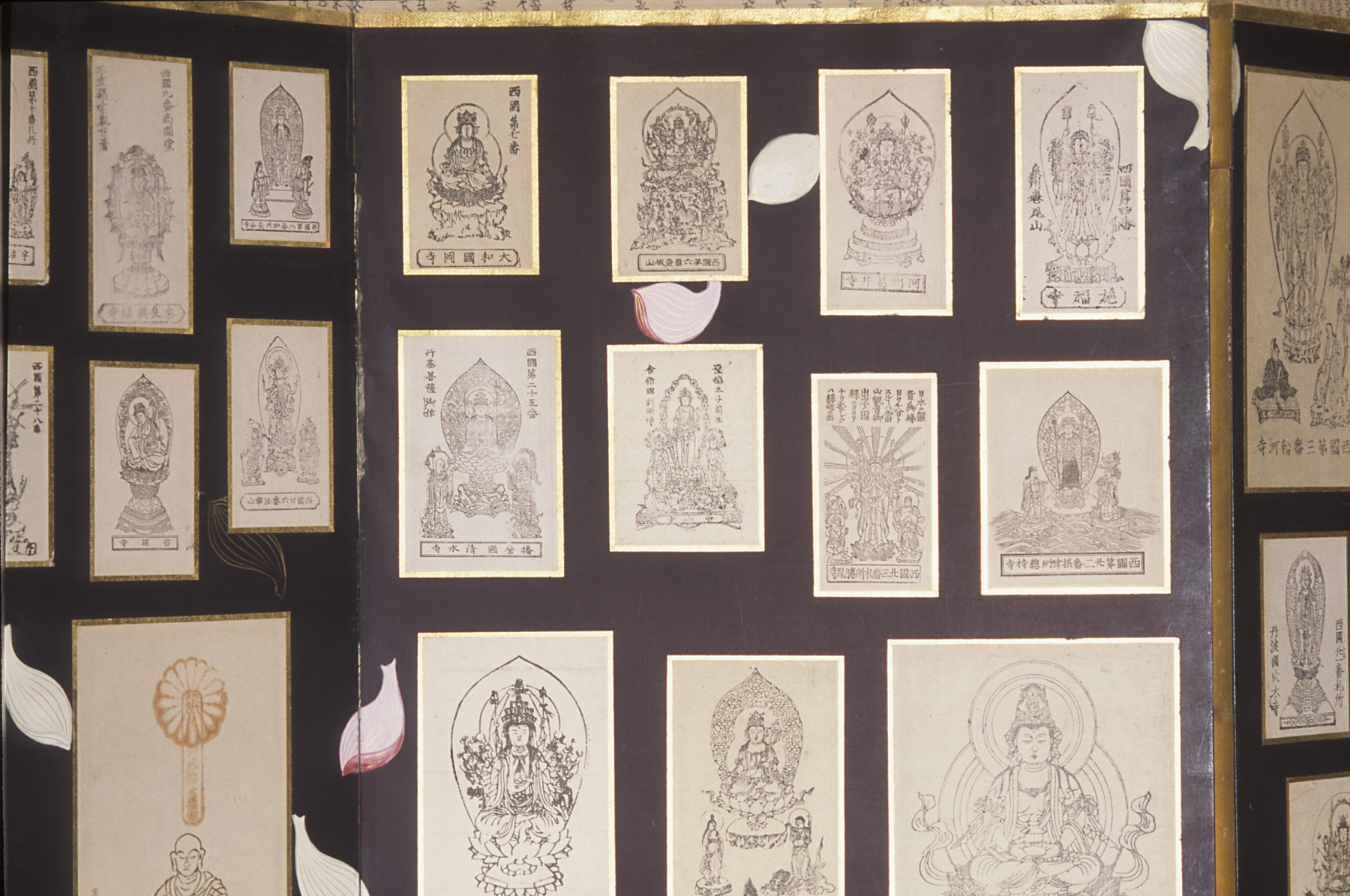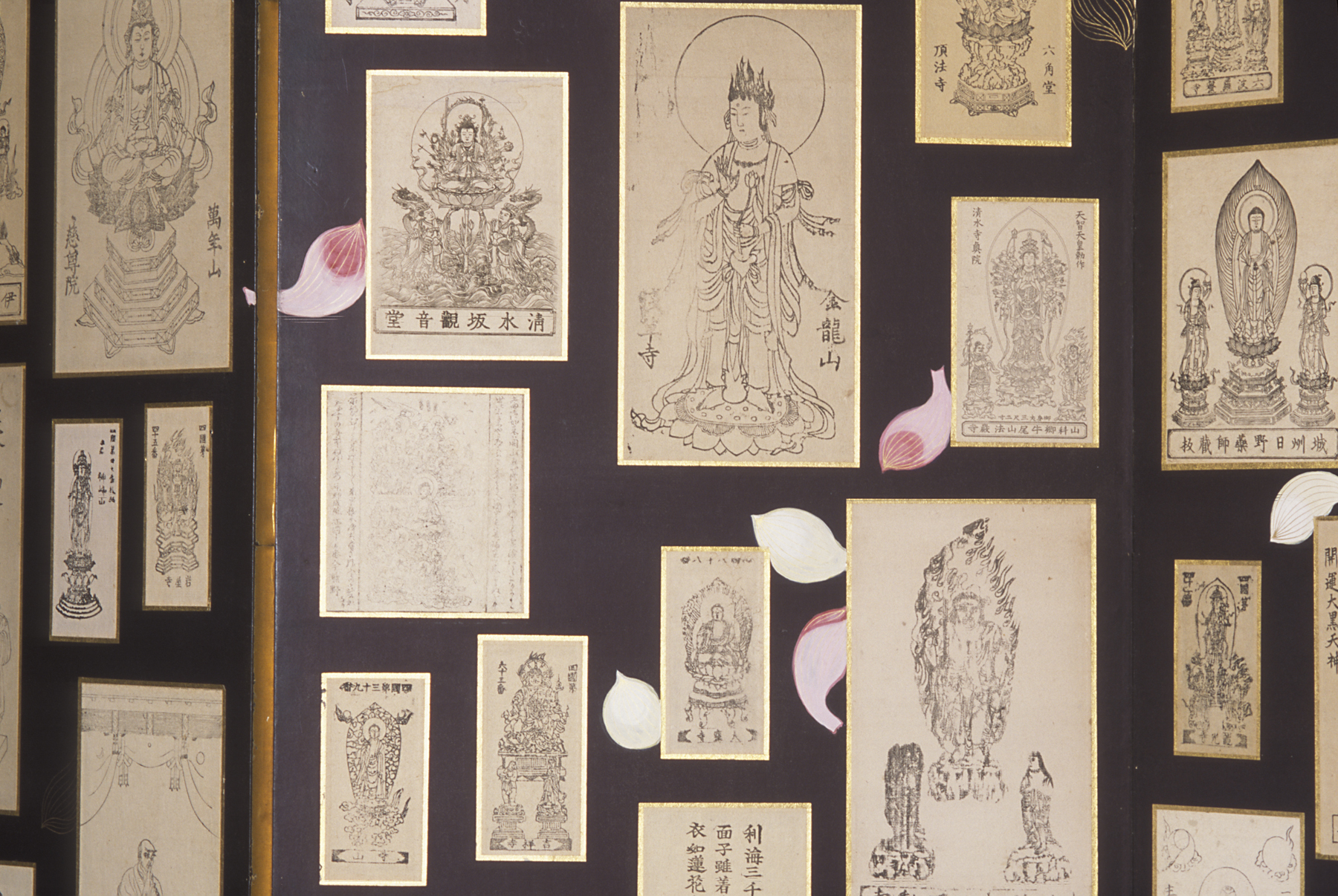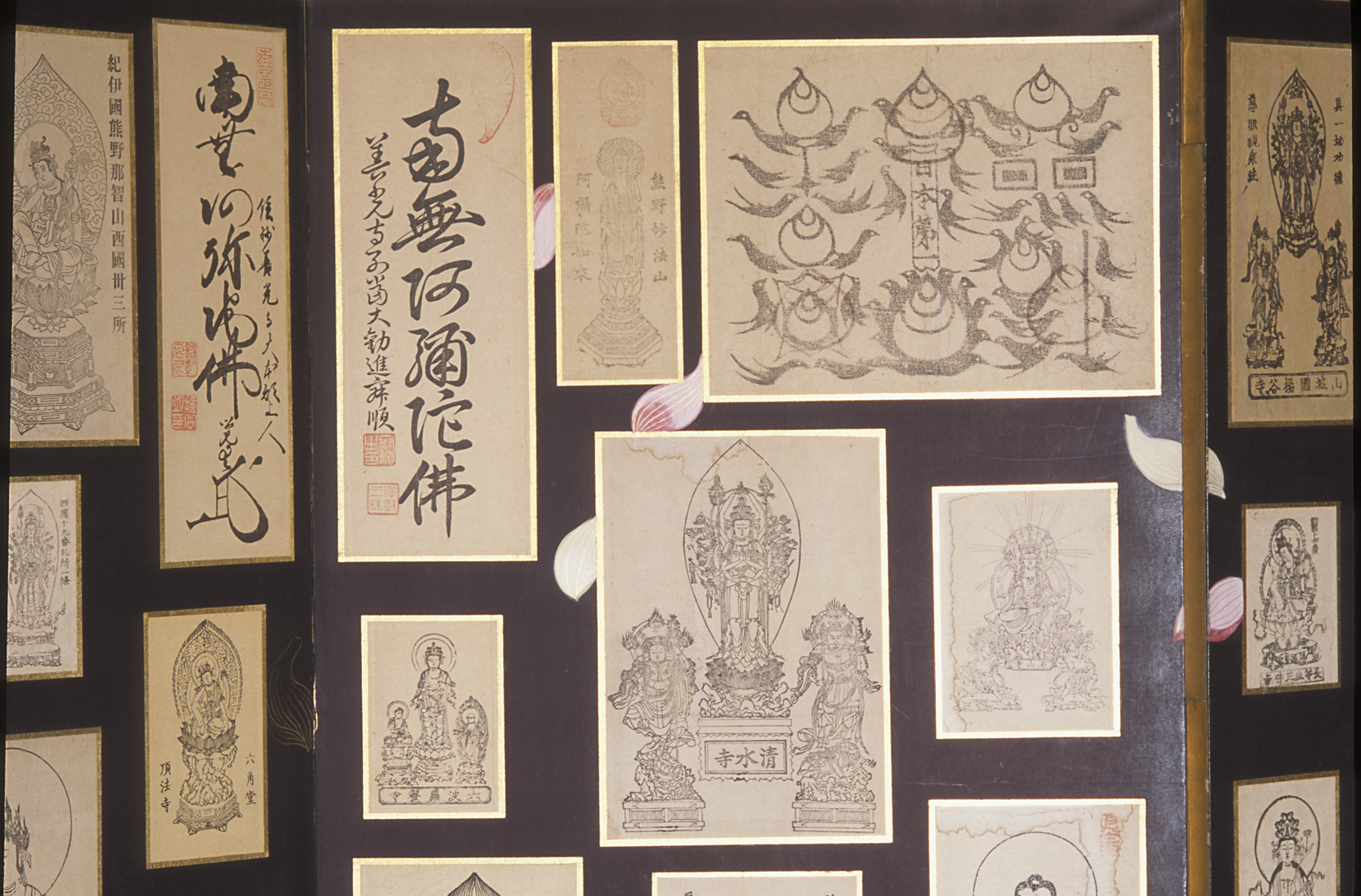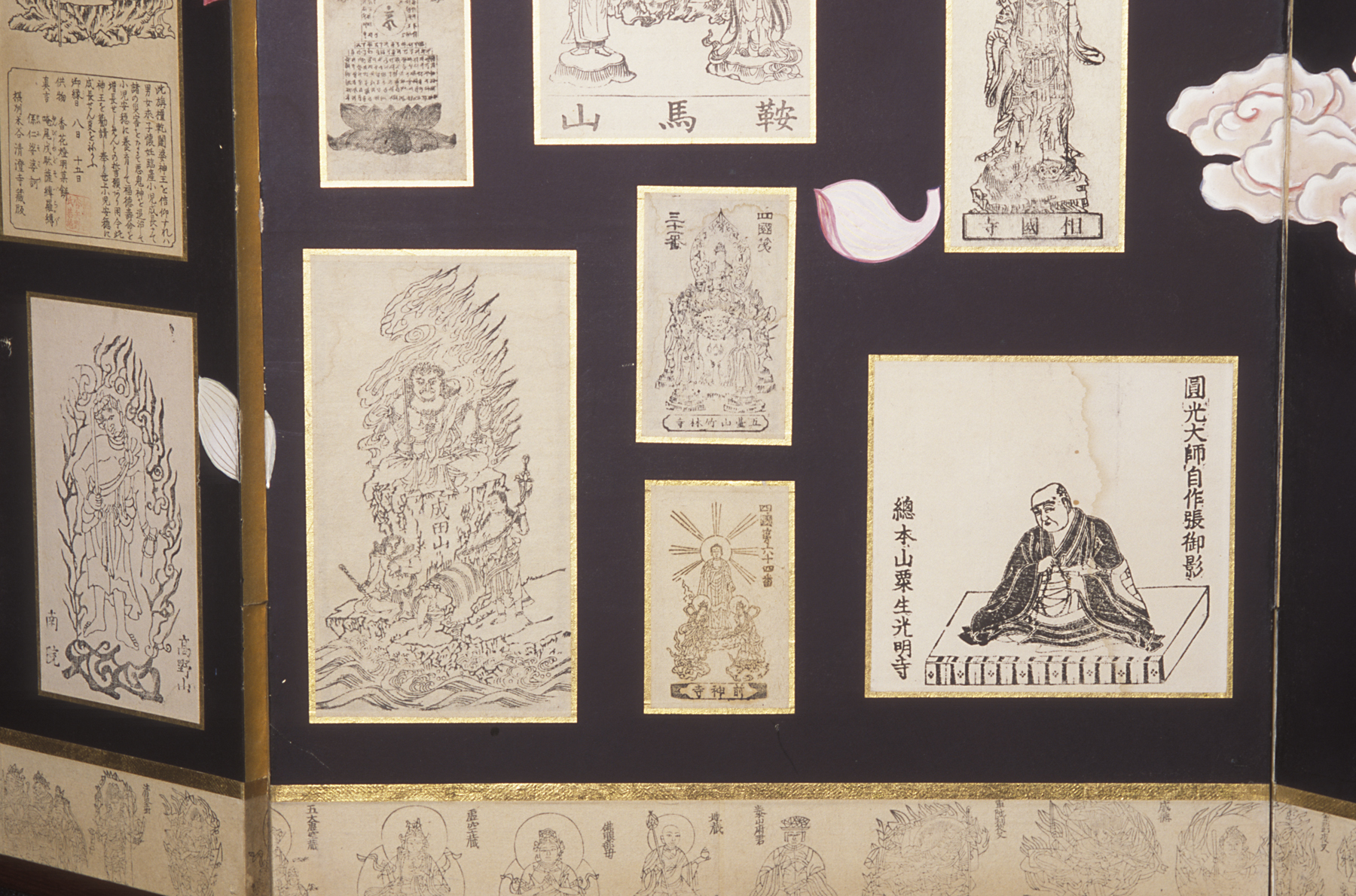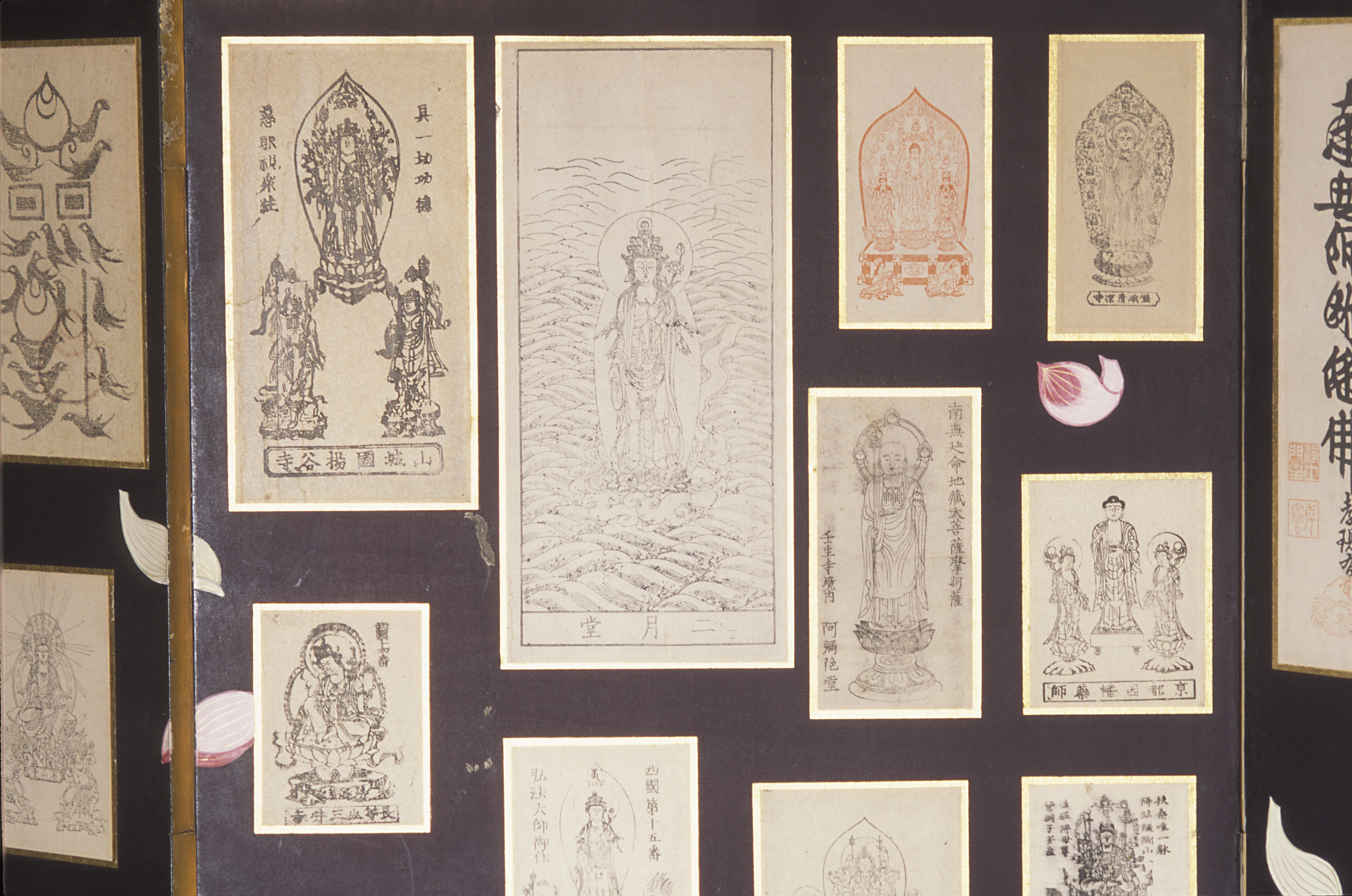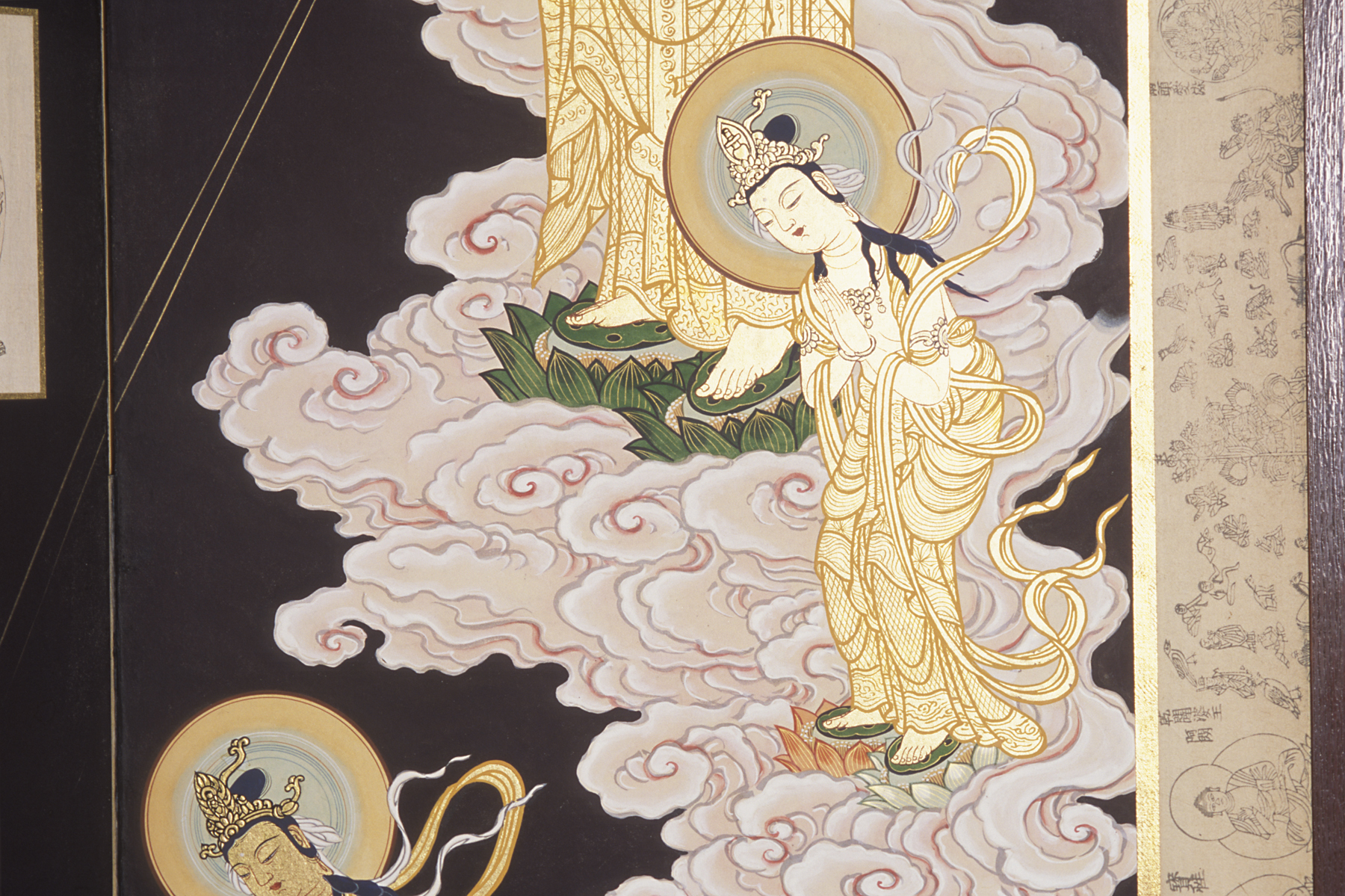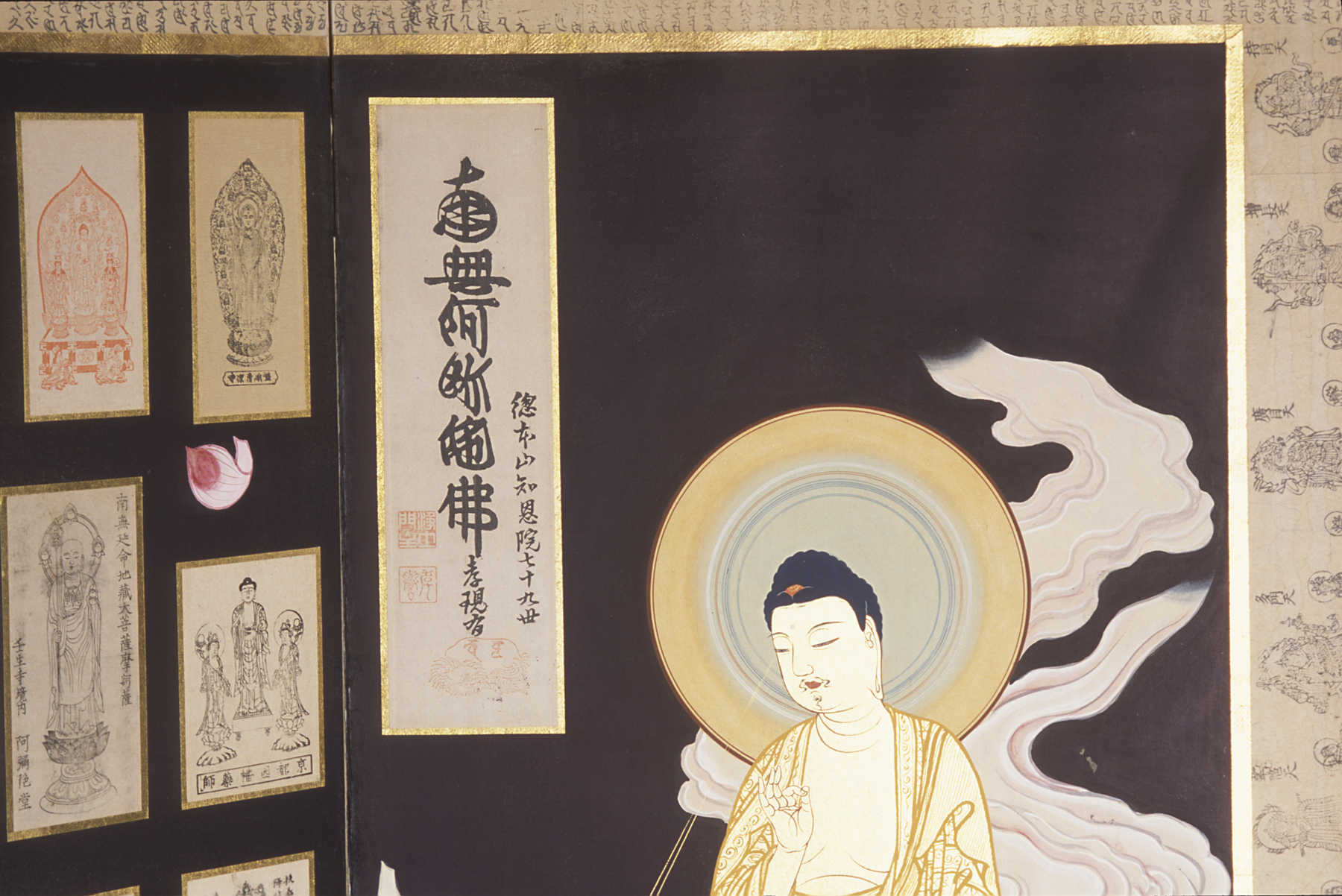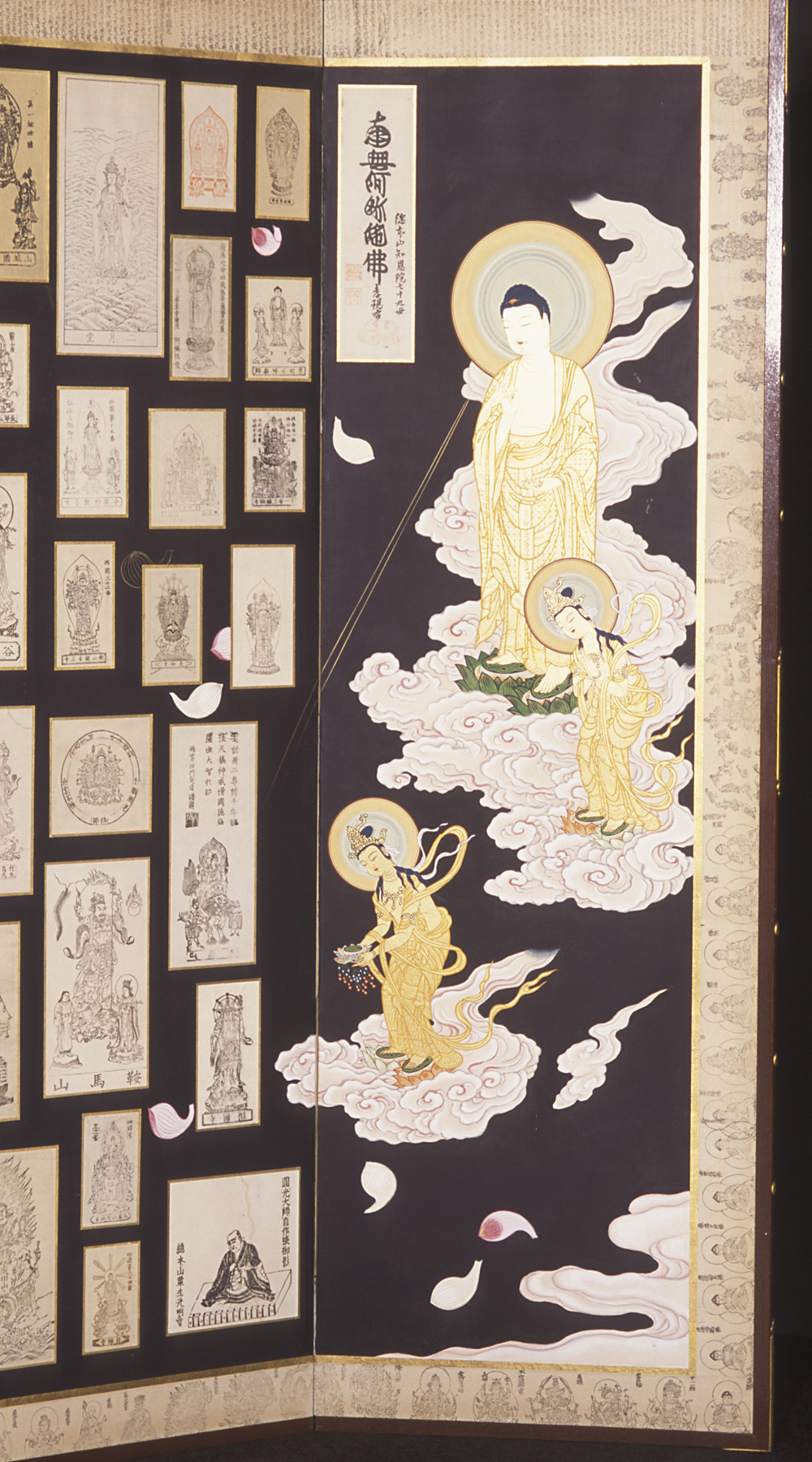screen with osugata (Buddhist pilgrimage prints), unknown maker from Japan
Artwork Overview
screen with osugata (Buddhist pilgrimage prints)
, mid 1900s, Showa period (1926–1989); prints from Edo period (1600–1868) to Meiji period (1868–1912)
Where object was made: Japan
Material/technique: woodcut; paper; paper; ink
Dimensions:
Object Height/Width/Depth (Height x Width x Depth): 134 x 263 cm
Image Dimensions Height/Width (Height x Width): 149.2 x 279 cm
Object Height/Width (Height x Width): 52 3/4 x 103 9/16 in
Weight (Weight): 19 lbs
Object Height/Width/Depth (Height x Width x Depth): 134 x 263 cm
Image Dimensions Height/Width (Height x Width): 149.2 x 279 cm
Object Height/Width (Height x Width): 52 3/4 x 103 9/16 in
Weight (Weight): 19 lbs
Credit line: Gift of David H. Weinglass and Marilyn Carbonell
Accession number: 2001.0076
Not on display
If you wish to reproduce this image, please submit an image request
